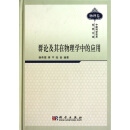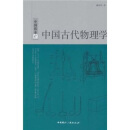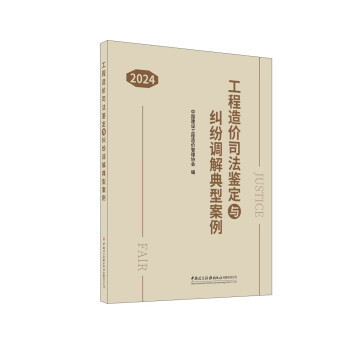内容简介
Principles and Techniques、Design: Basic Principles and Techniques、The Art of Experimentation、Replication、Blocking、Randomization、Analysis: Basic Principles and Techniques、Planning Experiments、A Checklist for Planning Experiments、Real Experiment——Cotton-Spinning Experiment等等。
目录
Preface
1. Principles and Techniques
1.1. Design: Basic Principles and Techniques
1.1.1. The Art of Experimentation
1.1.2. Replication
1.1.3. Blocking
1.1.4. Randomization
1.2. Analysis: Basic Principles and Techniques
2. Planning Experiments
2.1. Introduction
2.2. A Checklist for Planning Experiments
2.3. A Real Experiment——Cotton-Spinning Experiment
2.4. Some Standard Experimental Designs
2.4.1. Completely Randomized Designs
2.4.2. Block Designs
2.4.3. Designs with Two or More Blocking Factors
2.4.4. Split-Plot Designs
2.5. More Real Experiments
2.5.1. Soap Experiment
2.5.2. Battery Experiment
2.5.3. Cake-Baking Experiment
Exercises
3. Designs with One Source of Variation
3.1. Introduction
3.2. Randomization
3.3. Model for a Completely Randomized Design
3.4. Estimation of Parameters
3.4.1. Estimable Functions of Parameters
3.4.2. Notation
3.4.3. Obtaining Least Squares Estimates
3.4.4. Properties of Least Squares Estimators
3.4.5. Estimation ofo2
3.4.6. Confidence Bound for ~r2
3.5. One-Way Analysis of Variance
3.5.1. Testing Equality of Treatment Effects
3.5.2. Use of p-Values
3.6. Sample Sizes
3.6.1. Expected Mean Squares for Treatments
3.6.2. Sample Sizes Using Power of a Test
3.7. A Real Experiment——-Soap Experiment, Continued
3.7.1. Checklist, Continued
3.7.2. Data Collection and Analysis
3.7.3. Discussion by the Experimenter
3.7.4. Further Observations by the Experimenter
3.8. Using SAS Software
3.8.1. Randomization
3.8.2. Analysis of Variance
Exercises
4. Inferences for Contrasts and Treatment Means
4.1. Introduction
4.2. Contrasts
4.2.1. Pairwise Comparisons
4.2.2. Treatment Versus Control
4.2.3. Difference of Averages
4.2.4. Trends
4.3. Individual Contrasts and Treatment Means
4.3.1. Confidence Interval for a Single Contrast
4.3.2. Confidence Interval for a Single Treatment Mean
4.3.3. Hypothesis Test for a Single Contrast or Treatment Mean
4.4. Methods of Multiple Comparisons
4.4.1. Multiple Confidence Intervals
4.4.2. Bonferroni Method for Preplanned Comparisons
4.4.3. Scheff6 Method of Multiple Comparisons
4.4.4. Tukey Method for All Pairwise Comparisons
4.4.5. Dunnett Method for Treatment-Versus-Control Comparisons
4.4.6. Hsu Method for Multiple Comparisons with the Best
reatment
4.4.7. Combination of Methods
4.4.8. Methods Not Controlling Experimentwise Error Rate
4.5. Sample Sizes
4.6. Using SAS Software
4.6.1. Inferences on Individual Contrasts
4.6.2. Multiple Comparisons
Exercises
5. Checking Model Assumptions
5.1. Introdu
试读
In the analysis of data, it is desirable to provide both graphical and statistical analyses. Plotsthat illustrate the relative responses of the factor settings under study allow the experimenterto gain a feel for the practical implications of the statistical results and to communicateeffectively the results of the experiment to others. In addition, data plots allow the proposedmodel to be checked and aid in the identification of unusual observations, as discussed inChapter 5. Statistical analysis quantifies the relative responses of the factors, thus clarifyingconclusions that might be misleading or not at all apparent in plots of the data.
The purpose of an experiment can range from exploratory (discovering new importantsources of variability) to confirmatory (confirming that previously discovered sources ofvariability are sufficiently major to warrant further study), and the philosophy of the analysisdepends on the purpose of the experiment. In the early stages of experimentation the analysismay be exploratory, and one would plot and analyze the data in any way that assists in theidentification of important sources of variation. In later stages of experimentation, analysisis usually confirmatory in nature. A mathematical model of the response is postulated andhypotheses are tested and confidence intervals are calculated. In this book, we use linear models to model our response and the methodofleast squaresfor obtaining estimates of the parameters in the model. These are described in Chapter 3.Our models include random "error variables" that encompass all the sources of variabilitynot explicity present in the model. We operate under the assumption that the error termsare normally distributed. However, most of the procedures in this book are generally fairlyrobust to nonnormality, provided that there are no extreme observations among the data. It is rare nowadays for experimental data to be analyzed by hand. Most experimentersand statisticians have access to a computer package that is capable of producing, at the veryleast, a basic analysis of data for the simplest experiments. To the extent possible, for eachdesign discussed, we shall present useful plots and methods of analysis that can be obtainedfrom most statistical
前言/序言
Our initial motivation for writing this book was the observation from various students thatthe subject of design and analysis of experiments can seem like "a bunch of miscellaneoustopics." We believe that the identification of the objectives of the experiment and the practicalconsiderations governing the design form the heart of the subject matter and serve as thelink between the various analytical techniques. We also believe that learning about designand analysis of experiments is best achieved by the planning, running, and analyzing of asimple experiment.
With these considerations in mind, we have included throughout the book the detailsof the planning stage of several experiments that were run in the course of teaching ourclasses. The experiments were run by students in statistics and the applied sciences and aresufficiently simple that it is possible to discuss the planning of the entire experiment in afew pages, and the procedures can be reproduced by readers of the book. In each of theseexperiments, we had access to the investigators actual report, including the difficultiesthey came across and how they decided on the treatment factors, the needed number ofobservations, and the layout of the design. In the later chapters, we have included detailsof a number of published experiments. The outlines of many other student and publishedexperiments appear as exercises at the ends of the chapters. omplementing the practical aspects of the design are the statistical aspects of the anal-ysis. We have developed the theory of estimable functions and analysis of variance withsome care, but at a low mathematical level. Formulae are provided for almost all analyses sothat the statistical methods can be well understood, related design issues can be discussed,and computations can be done by hand in order to check computer output.
We recommend the use of a sophisticated statistical package in conjunction with thebook. Use of software helps to focus attention on the statistical issues rather than on thecalculation. Our particular preference is for the SAS sof~vare, and we have included theelementary use of this package at the end of most chapters. Many of the SAS program filesand data sets used in the book can b






















